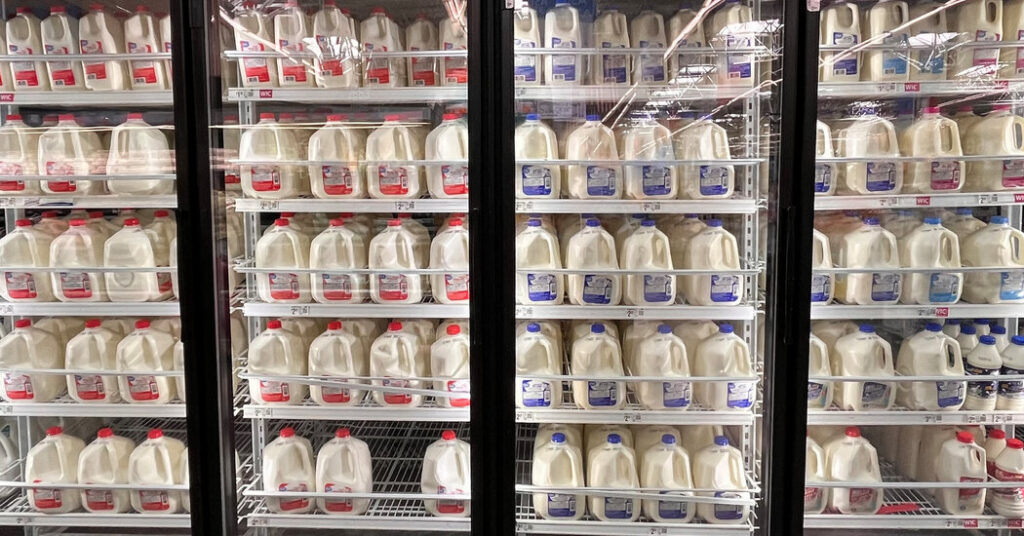“From the day I take the oath of office, we’ll rapidly drive prices down and make America affordable again,” Donald Trump promised Americans last summer as he ran for president. “Prices will come down. You just watch. They’ll come down fast.”
Prices have not come down. Ten months after Mr. Trump took office, prices are still climbing. Groceries are more expensive. Electricity bills have spiked. It costs more to buy a new car. The annual rate of inflation was 3 percent in September — almost exactly the same as it was on Inauguration Day.
The president’s failure was predictable. Prices almost never fall across the entire economy. When they do, it tends to be because of a crisis, such as the Great Depression. Mr. Trump is responsible for misleading the American people. But he has not merely failed to keep an impossible promise. Mr. Trump has pursued policies, starting with tariffs, that are making the problem worse by making life in America less affordable.
One way to see the impact is to track inflation over the past year. As the effects of the Covid-19 pandemic have worn off, the pace of price increases declined from an annual rate of 3 percent in January to 2.3 percent in April. Then, as Mr. Trump’s policies started to take effect, inflation rebounded to 3 percent. “In some ways, this administration could have come in and done nothing and made progress on inflation,” said Claudia Sahm, a longtime Federal Reserve economist who now works at New Century Advisors, an investment firm. “But the policies they’ve chosen have created extra costs for businesses, and businesses tend to pass on costs.”
The cost of Mr. Trump’s policies is likely to increase in the coming months.
His most inflationary policy is his campaign to build a wall of tariffs around the American economy. Tariffs are taxes on imports, and they are initially paid by the businesses that bring goods into the United States. In the early months of Mr. Trump’s presidency, importers mostly absorbed those costs rather than raising prices to recoup the money from consumers. Some companies said they were waiting to see if the tariffs would last. As time has passed, companies increasingly have shifted the costs of the tariffs to their customers. Goldman Sachs estimates that the share of tariff costs borne by consumers has increased from 22 percent in April to 55 percent in October, and that it will continue to rise, reaching 67 percent by the middle of next year.
As this board has noted in previous editorials, the revival of domestic manufacturing is a worthy goal, and if tariffs were applied judiciously, the benefits might outweigh the costs. But Mr. Trump’s indiscriminate use of tariffs is doing far more harm than good. The current tariffs will cost the average U.S. household about $1,800 per year, the Yale Budget Lab estimates.
The administration’s crackdown on immigration is similarly being conducted in ways that maximize the economic costs. Reducing illegal immigration is a worthy goal, and its long-term economic effects are complex. But Mr. Trump’s cruel, chaotic campaign to deport and drive out undocumented immigrants is creating labor shortages that increase prices. It is part of the reason food prices were rising at an annual pace of 3.1 percent as of September, the last data released before the government shutdown.
The pain is acute because price increases are outpacing wage gains for most American households, especially those with lower incomes. The gap between wage growth for the most affluent and least affluent households has been larger this year than at any time in the past decade, according to Bank of America Institute, which uses proprietary data from the bank’s enormous customer base.
Mr. Trump also has been rolling back federal programs that help households make ends meet. His signature domestic policy law, passed in July, will reduce access to Medicaid and food stamps. Because of Mr. Trump’s opposition to an extension of health insurance subsidies, millions of Americans will soon face sharply higher premiums.
Earlier this year, Mr. Trump blithely suggested that Americans could cope with the impact of tariffs by purchasing fewer toys for their children. “Well, maybe the children will have two dolls instead of 30 dolls, you know?” the president said. “And maybe the two dolls will cost a couple of bucks more than they would normally.”
More recently, after an impressive set of victories by Democratic candidates running on affordability issues, including Zohran Mamdani’s mayoral campaign in New York City, Mr. Trump has taken to insisting that prices aren’t rising. “Every price is down,” the president claimed two days after the election this month. The White House put out a news release a few days later declaring that “inflation has been tamed” (it hasn’t) and that “everyday prices are beginning to drop” (they also have not).
The truth is obvious to people who pay their own bills or shop for their own groceries. Mr. Trump should be spending his time figuring out how the government can help.
Making progress on affordability is not easy, and it cannot be done quickly. But there are concrete opportunities. Most important, Mr. Trump needs to stop making things worse.
The administration’s recent decision to roll back tariffs on coffee, beef and scores of other imported foods is a good first step — and an acknowledgment that tariffs do raise prices. Mr. Trump should maintain only those tariffs that have a clear strategic purpose, like reviving domestic semiconductor production.
The president also can press Congress to extend tax credits for Obamacare health insurance plans. He can work with Congress to expand legal immigration. He can nominate Fed officials who will resist political pressure to deliver short-term growth at the expense of inflation.
A longer-term agenda focused on affordability would need to be much broader. It would include plans to increase housing construction, help workers claim a larger share of corporate profits and speed the development of low-cost energy sources like solar and wind power. Mr. Trump, during nearly five years as president, has made clear that he has little interest in the hard work of making policy. On housing, the closest he’s come is floating the idea of federal backing for a 50-year mortgage, which will do nothing to bring down the true cost of housing.
The president recently shared a photo of a White House bathroom that he had renovated by covering everything in marble. What Americans need is a president who is more focused on the cost of toilet paper. It’s up more than 3 percent so far this year.
The Times is committed to publishing a diversity of letters to the editor. We’d like to hear what you think about this or any of our articles. Here are some tips. And here’s our email: [email protected].
Follow the New York Times Opinion section on Facebook, Instagram, TikTok, Bluesky, WhatsApp and Threads.
The post Trump Promised Lower Prices. His Policies Are Raising Them. appeared first on New York Times.




